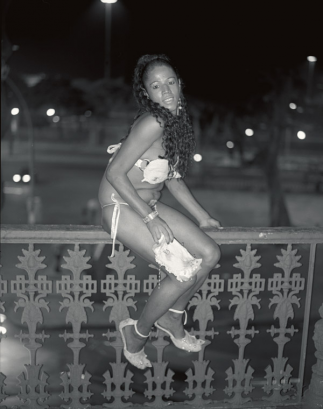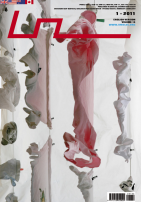| Umělec magazine 2011/1 >> TransRat FashionShow | List of all editions. | ||||||||||||
|
|||||||||||||
TransRat FashionShowUmělec magazine 2011/101.01.2011 Spunk Seipel | profile | en cs de |
|||||||||||||
|
Wherever you are you are with brody&paetau
A collaborative team of artists who, indiscriminately and bordering on the intolerable, caricature global arrogance and regional slime. They are especially known for their degrading actions aimed at the functioning of contemporary culture. Art critic Adam Budak: “This conceptual neo-dadaistic artistic duo is on the lookout for the worst aspects of institutionalized art and the very phenomena of art production itself. Their strategy is obvious and almost embarrassing in its literal and straightforward approach – although this may be its strongest quality. Their themes and targets are elemental as well: everyday ethics and moral codes form the source of their subject-matter-like vocabulary. Above all, their investigation focuses on the psychology of behavior as influenced or provoked by the external aspects of life and politics. Oscillating between use and abuse, advanced manipulation and the cold unassailable representation of the absurdity of reality, their work is truly critical and sincere in its desire to uncover the pathologies and hidden normalcy of interpersonal relations. Their actions are always well structured, with a nearly perfect, precise and calculated dramaturgy, cold and emotionally disturbing, bold and vicious, and thoroughly penetrating. If anything, their work could use some more careful balancing; the desired scandalous result could more properly be used as a tool for emphasizing the decline of certain values and their sudden corruption.” A transsexual is standing on the steps of a cheap hotel, posing in her bikini. Her inflated breasts make her small bikini top look much too small. In another photograph, one of her colleagues has pulled her penis out of her bikini and is masturbating. Her surgically altered lips are opened in a manner intended to be lascivious, but which only heightens the streetwalkers’ miserable existence. They are pictures that communicate in close detail these women’s fragile dreams and abused bodies. Artist Kristofer Paetau had five “models” photographed in Rio de Janeiro wearing the bikini collection designed by him. He makes no secret of the fact that he is playing with counterfeits and fashion labels, with the insanity that is the driving force behind the fashion industry, and with the unreal dreams of the transsexuals themselves. Even the title of his series, says the artist, shows his intentions: Transratfashion. Fashion for transsexuals, made from rats. For people on the margins of society. Fashion from the most disgusting of animals. The collection consists of five parts: two graceful shoes adorned by rat’s heads with glass eyes; a tiny handbag made from two rats; a somewhat silly little kerchief, also sewn from a rat, complete with head, paws and tail, and lined by a lace border; and the collection’s most important element – a two-piece bikini, with a top consisting of two rats that appear to become intertwined between the breasts, and with a tiny bottom typical for Rio which, when worn, achieves the effect of one rat appearing to crawl out of the wearer’s asshole and another wanting to climb up her belly. All stamped with the golden logo of Chanel, one of the world’s most expensive and best-known fashion labels. Paetau presents his fashion collection in a glass display case as if it were on display at a luxury department store or at one of Chanel’s flagship stores. For a brief moment, you may even think that the swimwear and accessories are truly from Chanel. Still, although Chanel’s head designer Karl Lagerfeld has no problem working with fur, rats are out of the question – after all, they are a symbol of revulsion and poverty. Rats are not found in rich areas and, at best, only punks are willing to have anything to do with them. After all, we have heard the stories of rats gnawing off someone’s nose in their sleep. A spoiled woman is not going to wear such a fur on her body, especially if you can still see the animals’ limbs and heads. The fashion industry uses other ways of creating the minor shock value it needs for media and advertising. Since Chanel stands for absolute luxury, many of the company’s products are copied by counterfeiters. Unlike Paetau, however – who gave his creativity free rein – the counterfeiters make more or less poor copies of the Parisian haute couture company’s fashions. Kristofer Paetau, who hails from Finland and intermittently lived in Rio, manages something new, thus – as so often in his art – crossing frontiers. Paetau has made use of the shock value of dead animals before. For instance, in 2007 he and Ondrej Brody collaborated on numerous projects in which they had dead dogs processed into bedside carpets. The shock of seeing a dead dog in this form hit a nerve and broke a taboo. You just don’t do that to sweet little dogs! The choice of “fake labels” is interesting as well, of course. Rats are the exact opposite of Chanel’s image. The contrast between the fashion label and rat fashion for transsexuals could not be any bigger. But Chanel is constantly associated with the myth of the company’s founder. Coco Chanel was born out of wedlock in 1883 and spent part of her childhood in an orphanage. She slept her way to the top as a small-time singer in cheap cabarets, until she managed to build up her own fashion empire and could claim that she had liberated women from the corset. Naturally, this had been done by others before her and the company also doesn’t like to hear about her role as Nazi collaborator. Today, the company is headed by Karl Lagerfeld, who has turned himself into an artistic creation in his own right and whose cynical nature is particular close to the humor of many transsexuals. In other words, Paetau chose precisely that label whose myth comes closest to the dreams and wishes of transsexuals. But “Transratfashion” is not merely a fashion collection for transsexuals or a caricature thereof – although perhaps it is this as well. It is the shock, the aversion that we feel at various levels when looking at these photographs – reactions found not only with this work, but with many other works of art by Kristofer Paetau. Our ingrained mental images and clichés are broken down. We are forced to confront people from the margins of society, their abused bodies, the results of their desire for perfection. We are irritated by the violation of gender boundaries. “Transratfashion” asks questions about the limits of luxury, whether everything that is possible should be permitted, questions about the status we assign to animals that we find disgusting. The black-and-white photographs show the fragility of the models’ dreams, precisely because they are wearing these intricately counterfeited luxury products in this cheap hotel. They question many of our own values as well.
01.01.2011
Recommended articles
|
|||||||||||||











Comments
Add new comment